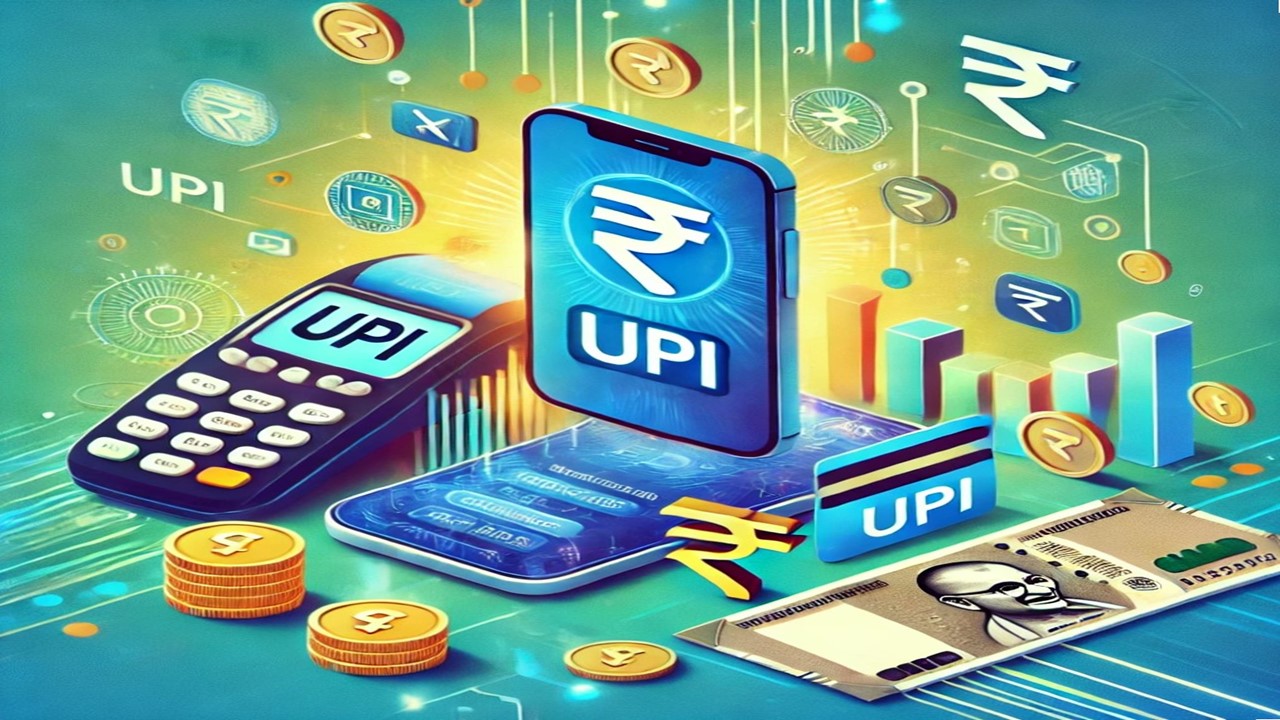
UPI: The Gateway to Digital Transactions in India
Introduction
In today’s fast-paced world, where everything is going online, digital payment systems have completely transformed the way financial transactions are conducted. One of the most significant revolutions in this space is the Unified Payments Interface (UPI). Launched in 2016 under the auspices of the Government of India, it has now become one of the most popular digital payment methods in the country. UPI has not only simplified and expedited payments but has also made significant contributions to India’s economy.
Meaning and Functionality of UPI
UPI is a mobile-based payment system that allows users to link multiple bank accounts through a single app. It enables users to send and receive money instantly, securely, and conveniently. Using UPI is very straightforward:
- Download the App: Users download a UPI-enabled app on their smartphones, such as Google Pay, PhonePe, Paytm, etc.
- Add Bank Account: Users link their bank account to the app.
- Set UPI PIN: For security, users need to set a UPI PIN, which is required for every transaction.
- Make Transactions: Users specify the amount by selecting a contact or entering a number and then enter their PIN to complete the payment.
Types of UPI Transactions
UPI supports several types of transactions, making it suitable for various users:
- Peer-to-Peer Transactions: This involves direct transactions between users, such as sending money to friends or family.
- Merchant Transactions: Users can pay for goods or services at stores and online platforms. Many merchants have now incorporated UPI into their payment methods.
- UPI Lite: This new feature is designed for small transactions, allowing users not to enter a PIN every time, but there are limits on the total amount and maximum per transaction.
UPI Security
While UPI is easy to use, security is a significant concern for users. UPI provides several measures for security:
- UPI PIN: Every user must set a unique UPI PIN, known only to them. This PIN is necessary to authorize transactions.
- Two-Factor Authentication: UPI transactions use two-factor authentication, enhancing security.
- Limited Transaction Amount: UPI Lite has limits on the maximum amount and per transaction, reducing potential losses.
- Fraud Monitoring: Banks continuously monitor transactions to help detect suspicious activities.
Key UPI Apps
Several apps in India facilitate transactions through UPI. Some of the prominent ones include:
- Google Pay: This app allows users to send and receive money easily. It also offers various cashback and reward schemes.
- PhonePe: PhonePe is a multi-functional app that supports not just UPI payments but also mobile recharges, bill payments, and other services.
- Paytm: Initially started as a mobile wallet, Paytm now supports UPI transactions, allowing users to make payments both online and offline.
- BHIM: This is the official UPI app developed by NPCI, aimed at promoting digital payments in India.
Impact of UPI on the Indian Economy
UPI has profoundly impacted India’s economy. It has reduced reliance on cash through digital transactions, promoting financial inclusion in the country. UPI has enabled small businesses to accept convenient payments, accelerating their growth.
Not only has UPI made transactions easier for the general public, but it has also created opportunities for startups and small businesses. Now, any merchant can accept digital payments without significant technological investment, increasing their sales.
Global Context of UPI
While UPI has become a significant success symbol in India, its effectiveness and technical capabilities make it important internationally. Other countries have shown interest in adopting systems similar to UPI. The Reserve Bank of India (RBI) has engaged in discussions with other countries to explore the potential of UPI.
Future Possibilities
There are several exciting possibilities for UPI’s future. One major prospect is the international integration of UPI. If made available globally, it would allow Indian users to conduct transactions in other countries.
Additionally, the use of new technologies such as QR codes, voice-based payments, and AI-driven fraud detection will further enhance the security and utility of UPI.
Conclusion
UPI has completely transformed the landscape of digital payments in India. Its simplicity, speed, and security have made it an ideal option for everyone. UPI is not only making transactions easier but is also making a significant contribution to the economy.
As UPI expands, it will play a crucial role in promoting financial inclusion and developing India as a digital economy. The success of UPI has proven how the combination of technological innovation and the simplicity of digital payments can herald the beginning of a new era.
With the future of UPI, we can envision a India where financial transactions are smoother and safer than ever, and where everyone can be part of the digital economy.


































































